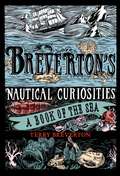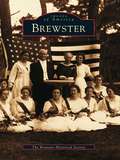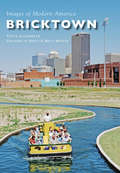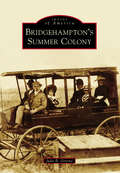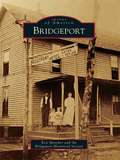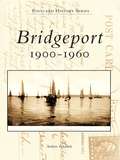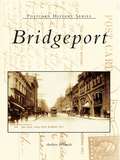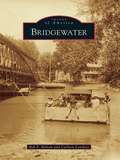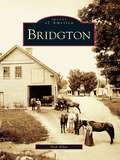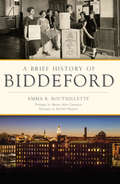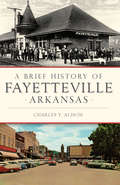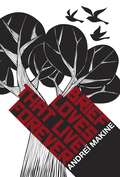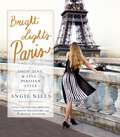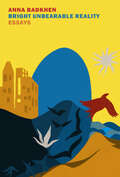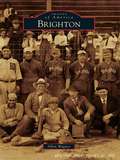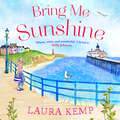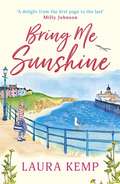- Table View
- List View
Breve historia de los viajes de Colón (Breve Historia)
by Juan Gabriel Rodríguez LagunaProfundice en la búsqueda del Nuevo Mundo desde un punto de vista histórico y antropológico. Desde las primeras exploraciones, el contexto histórico de Colón y la España de los Reyes Católicos hasta los 4 viajes colombinos y el choque con las civilizaciones prehispánicas. Una visión completa y rigurosa basada en los últimos hallazgos arqueológicos. Asista al Descubrimiento de América de forma crítica, desde un punto de vista histórico y antropológico. Conozca las diferentes hipótesis sobre los orígenes del poblamiento americano, el contexto histórico de Colón y la España de los Reyes Católicos, la primera toma de contacto con el Atlántico y sus personajes, los cuatro viajes colombinos, las culturas amerindias más destacadas y las consecuencias del contacto con los europeos y viceversa, rompiendo con la estructura mental medieval y marcando el comienzo de la Edad Moderna. Veremos los adelantos técnicos en materia náutica y geográficas del siglo XVI, las barreras físicas y psicológicas que tendrán que superar los marineros para atravesar un Mar Ignoto, así como las desconcertantes y trágicas consecuencias socioculturales de este proceso histórico con novedades y aclaraciones eclipsadas por la leyenda del Almirante y el ideario que de este hecho se tiene, un suceso glorioso para la universalización humana.
Breverton's Nautical Curiosities
by Terry BrevertonBreverton's Nautical Curiosities is about ships, people and the sea. However, unlike many other nautical compendiums, the focus of this book is on the unusual, the overlooked or the downright extraordinary. Thus, someone most of us do not know, Admiral William Brown, is given equal coverage to Admiral Nelson. Without Admiral Brown releasing Garibaldi, modern Italy might not exist. And without the barely known genius John Ericsson designing the Monitor, the Confederacy might have won the American Civil War. Readers will be stimulated to read more about the remarkable men--explorers, admirals and trawlermen--who have shaped our world. The sea has had a remarkable effect upon our language. We hear the terms "steer clear", "hit the deck", "don't rock the boat", "to harbor a grudge" and the like, and give little thought to them. In the pages of this book, the reader will find the origin of "bumpkin", a "brace of shakes", "born with a silver spoon", "booby prize", "to take on board", "above board", "bombed" (in the sense of being drunk), the "blues", "blind-side", "blind drunk", "the pot calling the kettle black", "reach the bitter end", "wasters", "ahoy", "all at sea", "to keep aloof", "piss-artist", "taken aback", "barbecue"' and "bamboozle". Other colourful terms, which have passed out of common usage, such as "bring one's arse to anchor" (sit down), "belly timber" (food) and "bog orange" (potato) are also included, as well as important pirate haunts, technical terms, famous battles, maritime inventors and ship speed records.
Brewing, Beer and Pubs: A Global Perspective
by David Higgins Ignazio Cabras David PreeceThe production of beer today occurs within a bifurcated industrial structure. There exists a small number of large, global conglomerates supplying huge volumes of a limited range of beers, and a plethora of small and medium breweries producing a diverse range of beers sold under unique brands. Brewing, Beer and Pubs addresses a range of contemporary issues and challenges in this key sector of the global economy, and includes contributions by research specialists from a variety of countries and disciplines. This book includes the marketing and globalization of the brewing industry, beer excise duties and market concentration, and reflections upon developments in brewing and beer consumption across the world in order to explore the wide-reaching influence of this industry. Alongside these global topics more localised themes are presented such as market integration in the Chinese beer and wine markets, beer and brewing in Africa and South America, and turbulence and change in the UK public house industry, which demonstrate how the consumption of beer in pubs and other social environments make the beer industry integral to local communities and regions worldwide.
Brewster
by The Brewster Historical SocietyIn 1803, the North Parish of Harwich voted to become the town of Brewster in honor of Elder William Brewster, one of the most distinguished and revered Pilgrims of the Mayflower. As times changed, the people of Brewster turned from farming to fishing and from salt making to tall ships. They traveled the sea, wheeling and dealing with merchants in nearly every port on earth, fighting pirates, and surviving typhoons. Those who returned brought home to Brewster a measure of wealth and sophistication that is an integral part of this little town's lively history. When the age of sail faded, the town looked to a quieter life. Brewster, with its eleven miles of pristine beaches, became the perfect tourist destination.Brewster tells the unique story of a town that prospered through the good times and held on amazingly during the bad times. It presents captivating photographs of the residents' struggle for existence as farmers, fisherman, and sailors. The book shows what the barbershop looked like and where the early residents of Brewster lived, played, and went to church. Brewster captures the charming moments of a time gone by.
Bricktown (Images of Modern America)
by Steve Lackmeyer Brent Brewer Brett BrewerBricktown, once an area reserved for federal troops, was given to Oklahoma City for development in 1898. Brick warehouses originally were built along rail lines to house wholesale operations, but a half century later, the district was abandoned as industry moved farther away from the urban core. The forgotten warehouse district was rediscovered by Neal Horton, who started the movement of transforming the area in 1979. Jim Brewer carried out Horton's vision, enabling Bricktown to become a regional destination where historic preservation and modern entertainment would merge. Excursion boats traverse a modern man-made recreational canal built in 1999 that flows between century-old brick warehouses. Bricktown's restaurants, shops, and attractions have hosted some of the biggest names in politics and entertainment. The transformation continues with the opening of The Criterion concert hall in 2016 and the construction of more retail space and restaurants, 400 apartments, and several hotels.
Bridgehampton (Images of America)
by Geoffrey K. FlemingBridgehampton is a fascinating look at one of the prime resort areas on the South Fork of Long Island. The history of Bridgehampton was captured magnificently by studio and itinerant photographers whose work from the mid-1800s to the late 1900s is reflected here. These stunning images show people as they raised children, worked on the farm, worshiped, studied, socialized, and played. The faces show expressions of pride, joy, and, occasionally even boredom, providing a realistic portrayal of the past.
Bridgehampton's Summer Colony (Images of America)
by Julie B. GreeneThe hamlet of Bridgehampton was settled in 1656 and aptly named for the bridge that was built to connect the settlements of Mecox and Sagaponack. Ninety miles from New York City, this rural farming community was transformed by the arrival of the Long Island Rail Road in 1870. With the notion that salt air and sea breezes were the perfect relief from the hot and sweltering isle of Manhattan, wealthy New Yorkers made the sojourn to the pristine shores of the Atlantic Ocean. On a trip down Ocean Road toward the beach, one would pass the grand homes of a toy importer, a pen manufacturer, a coal industrialist, a merchant tailor, and an inventor--the established summer colony. The region quickly gained a reputation as a pleasant summer resort--a reputation that still thrives today.
Bridgeport (Images of America)
by Bridgeport Historical Society Ken SprecherIn 1860, John Butterfield rerouted his famous stage line over the west fork of the Trinity River, and soon a small community sprang up along the banks near the new toll bridge. The settlement became known as Bridgeport, and its pioneers found themselves in the middle of both Texas and American history. Since then, Bridgeport's contributions to history have been achieved through the area's land, as well as the rich oil that flowed beneath the rugged, cactus-dotted country. Recognizing the importance of the earth and what lay below took the skill of entrepreneurs and the hard work of many people. The cast of pioneer characters included a young, well-educated New Yorker seeking adventure in the new republic, a stern but generous engineer from Pennsylvania, and a billionaire wildcatter from Houston. Not forgotten are the stories of immigrants from all over the world whose lives have enriched Bridgeport's historic past. Today Bridgeport continues to utilize natural resources while developing its local heritage and ecotourism sites.
Bridgeport: 1900-1960
by Andrew PehanickBridgeport: 1900-1960 presents a fascinating look into the history of Bridgeport through vintage postcards from the city's formative years. These vintage postcards depict the change and expansion in Bridgeport during the 20th century, from the growth of the University of Bridgeport from a small junior college into a major university to the changes in transportation from the horse and buggy to early automobiles and trolley cars. Bridgeport's waterfront played an important role in the development of the city, drawing visitors and wealthy residents who built homes along the shore. Following the two world wars, the city saw a large population increase, and a building boom soon followed. Factories and homes were built, retail stores moved in, and recreational options increased to serve the needs of the thousands of people who came to Bridgeport seeking employment.
Bridgeport: 1900-1960 (Postcard History)
by Andrew PehanickThe golden age of postcards, which took place between 1900 and 1940, was also the golden age of Bridgeport. Local and national publishers printed scenes of the city's beautiful and renowned parks, magnificent mansions, palatial theaters, and sprawling factories, as well as its busy streets and unique architecture. These cards carried images of Bridgeport near and far. Recipients of these mementos could imagine building automobiles at the Locomobile factory, dining at the Amazon Caf©, staying at the Stratfield Hotel, riding the carousel at the Steeplechase Island amusement park, shopping at Howlands, admiring the Wheeler Mansion, attending mass at the South Congregational Church, or watching the activity at the winter quarters of the Ringling Brothers and Barnum & Bailey Circus. Bridgeport takes the modern reader on a journey into the past through nearly two hundred of these vintage postcard images.
Bridgeville (Images of America)
by John F. Oyler Bridgeville Area Historical SocietyBridgeville has a rich historical heritage dating back to Colonial times. In the early 1800s, a small village grew along the meandering Chartiers Creek between two bridges on the Black Horse Trail. The construction of the Chartiers Valley Railroad, the establishment of the Norwood Hotel, and the opening of commercial bituminous coal mines in the region generated a population boom that motivated residents to seek autonomy from Upper St. Clair Township. In 1901, the borough of Bridgeville was incorporated, and the next 50 years saw the community become the social and business center for the four neighboring townships with schools, churches, and a bustling downtown business environment. Bridgeville remains close enough to Pittsburgh to enjoy the cultural advantages of a big city, yet far enough away to retain the feel of a small hometown.
Bridgewater
by David R. MooreNot long after the Pilgrims came ashore, Bridgewater became the first inland settlement to branch out from the Plymouth Colony, incorporating in 1656. Its fertile soil and bountiful rivers provided for a rich agricultural community. As the Industrial Revolution forced farmers into factories, Bridgewater experienced rapid social and economic growth and change. Iron, shoe, and paper manufacturing flourished, and the railroad brought European immigrants in search of the American Dream. In Bridgewater, vintage images tell the stories of the Bridgewater Academy, the normal school, the changes in and around the common, the business pursuits of local proprietors, and the spiritual and civic life of Bridgewater residents.
Bridgewater (Images of America)
by Bob F. Holton Carleen LovelessThe story of Bridgewater is one of survival. Since its founding in 1835, this community has endured six major floods, economic crises, and a war that took place on its own soil. Despite the adversity it faced, the town has not only prevailed but has grown into one of the strongest and most progressive towns in Virginia.
Bridging Saint John Harbour (Historic Canada)
by Harold E. Wright Joseph GoguenIn the 1850s, lumber mill owner W. Kilby Reynolds, with engineer Edward R. Serrell, succeeded in building the first suspension bridge to connect divided Saint John. This operated as a toll crossing until 1858, when it became a government-owned structure. From then until the present, there have been two vehicular-pedestrian bridges and two rail bridges serving travelers crossing Saint John Harbour at the gorge at the Reversing Falls. By the third quarter of the 19th century, there was talk and plans for a second bridge, one which would cross at Navy Island to the North End. It took about 80 years before this plan came to fruition, and the Saint John Harbour Bridge opened in 1968. Through this rich collection of photographs, Bridging Saint John Harbour clearly shows the importance of the varied connector bridges over Saint John Harbour and how they came to be built.
Bridgton (Images of America)
by Ned AllenIn 1768, Jacob Kimball moved to the shores of Long Lake in North Bridgton, building a store and providing boat service from Standish, at the southern end of Sebago Lake. Jacob Stevens soon followed, building a sawmill and gristmill on what became Stevens Brook in the center village. Ten power sites on this short brook ran lumber, textile, and other mills, as well as a tannery. Bridgton became the area's commercial center as retail stores and businesses sprang up to support the many mill workers and farm families. The first train on the narrow-gauge Bridgton and Saco River Railroad chugged into town in January 1883. Tourists and artists soon discovered Bridgton, and today the town remains a diverse mix of creative, hardworking people.
Brief History of Biddeford, A (Brief History)
by Emma R. Bouthillette Epilogue By Poupore Prologue By CasavantCaptain Richard Vines founded Winter Harbor in 1616. The small coastal village, now known as Biddeford, is the largest city in York County, with more than twenty-one thousand residents. During the nineteenth century, the city experienced a boom from the textile industry when textile magnate Samuel Batchelder established Pepperell Manufacturing Company, which rapidly became an international brand. The city suffered when textile manufacturing moved south in the mid-twentieth century, abandoning its expansive infrastructure along the Saco River. In 2004, Mayor Wallace Nutting organized local residents in a revitalization effort for the downtown area, and developers renovated historic mill buildings into residential and commercial space. Join author and lifelong Biddeford resident Emma Bouthillette as she revisits the city’s early history and explores its recent rebirth.
Brief History of Fayetteville Arkansas, A (Brief History)
by Charles Y. AlisonOriginally a small town called Washington Courthouse, Fayetteville bloomed into one of Arkansas’s largest cities. The town prospered during its first two decades, until it suffered decimation during the Civil War as troops moved throughout the region. In 1871, Fayetteville successfully bid to be home to the University of Arkansas, the state’s first public university. Today, the city represents a cultural convergence, with remnants of historic trails such as the Military Road between St. Louis and Fort Smith and the Trail of Tears. Author and historian Charlie Alison details pivotal events that shaped the city.
Brief Loves That Live Forever
by Andreï Makine Andrei MakineIn Soviet Russia the desire for freedom is also a desire for the freedom to love. Lovers live as outlaws, traitors to the collective spirit, and love is more intense when it feels like an act of resistance. Now entering middle age, an orphan recalls the fleeting moments that have never left him - a scorching day in a blossoming orchard with a woman who loves another; a furtive, desperate affair in a Black Sea resort; the bunch of snowdrops a crippled childhood friend gave him to give to his lover. As the dreary Brezhnev era gives way to Perestroika and the fall of Communism, the orphan uncovers the truth behind the life of Dmitri Ress, whose tragic fate embodies the unbreakable bond between love and freedom.
Bright Lights Paris: Shop, Dine & Live...Parisian Style
by Angie NilesTake a life-changing journey with a fashion insider through the neighborhoods of Paris—and become the most glamorous girl in town (without even trying). After spending much of her life mining the secrets of La Parisienne, Angie has discovered there are as many ways to be Parisian as there are arrondissements. Find out what Saint Germain women wear, where Canal Saint Martin girls shop and hang out with their friends, the décor tricks of the artistic ladies in Montmartre, and how to cook and entertain—as if you just rolled out of bed and onto the cobblestone streets of Le Marais… Featuring hundreds of stunning photographs and original fashion illustrations, as well as fabulous tips from celebrities, fashion designers, bloggers, chefs, and more!
Bright Unbearable Reality: Essays
by Anna Badkhen2022 National Book Awards Longlist for Nonfiction Essays about migration, displacement, and the hope for connection in a time of emotional and geopolitical disruption by a Soviet-born writer and former war correspondent.Called a &“chronicler of a world on the move&” by The New York Review of Books, Anna Badkhen seeks what separates and binds us at a time when one in seven people has left their birthplace, while a pandemic dictates the direst season of rupture in humankind&’s remembering. Her new essay collection, Bright Unbearable Reality, comprises eleven essays set on four continents—roving everywhere from Oklahoma to Azerbaijan—and united by a common thread of communion and longing. In these essays, Badkhen addresses the human condition in the era of such unprecedented dislocation, contemplates the roles of memory and wonder in how we relate to one another, and asks how we can soberly and responsibly counter despair and continue to develop—or at least imagine—an emotional vocabulary against depravity. The subject throughout the collection is bright unbearable reality itself, a translation of Greek enargeia, which, says the poet Alice Oswald, is &“when gods come to earth not in disguise but as themselves.&” Essays include: • In &“The Pandemic, Our Common Story,&” which takes place in the Great Rift Valley of Ethiopia, one of the locations where humankind originated, the onset of the global pandemic catches Badkhen mid-journey, researching human dispersal 160,000 years ago and migration in modern times. • In &“How to Read the Air,&” set mostly in Philadelphia, Badkhen looks to the ancient Greeks for help pondering our need for certainty at a time of racist violence, political upheaval, and environmental cataclysm. • &“Ways of Seeing&” and the title essay &“Bright Unbearable Reality&” wrestle with complications of distance and specifically the bird&’s eye view—the relationship between physical distance, understanding, and engagement. • &“Landscape with Icarus&” examines how and why children go missing, while &“Dark Matter&” explores how violence always takes us by surprise.
Brighton
by Albin WagnerThe town of Brighton was founded by railroad man and real estate developer Daniel F. Carmichael at the junction of the Denver Pacific (now Union Pacific) and Denver and Boulder Valley Railroads. Carmichael determined, "There should be a town here that would do credit to the splendid valley." The junction, originally named Hughes after the first president of the Denver Pacific Railroad, had a long history as a crossroads of the West. The town grew into an agricultural center for the Platte River Valley with a thriving sugar beet industry, dairies, and canning factories, but the changing economy would transform Brighton first into a suburban community and now into one of the fastest-growing cities in the United States.
Bring Me Sunshine: The perfect heartwarming and feel-good book to curl up with this year!
by Laura KempCharlotte Bold is nothing like her name - she is shy and timid and just wants a quiet life. When her job doing the traffic news on the radio in London is relocated to Sunshine FM in Mumbles, she jumps at the chance for a new start in Wales. But when she arrives she discovers that she's not there to do the travel news - she's there to front the graveyard evening show. And she's not sure she can do it.Thrust into the limelight, she must find her voice and find a way to cope. And soon she realises that she's not the only person who finds life hard - out there her listeners are lonely too. And her show is the one keeping them going.Can Charlotte seize the day and make the most of her new home? And will she be able to breathe new life into the tiny radio station too...?Read by Lowri Walton(p) Orion Publishing Group 2019
Bring Me Sunshine: The perfect heartwarming and feel-good rom-com to curl up with this year!
by Laura Kemp'A delight from the first page to the last' Milly Johnson, Sunday Times bestselling author of The Magnificent Mrs Mayhew'Laugh-out-loud funny, as warm as it is witty...If you love Milly Johnson you will love Laura Kemp' Debbie Johnson, bestselling author of The Comfort Food Café seriesCharlotte Bold is nothing like her name - she is shy and timid and just wants a quiet life. When her job doing the traffic news on the radio in London is relocated to Sunshine FM in Mumbles, she jumps at the chance for a new start in Wales. But when she arrives she discovers that she's not there to do the travel news - she's there to front the graveyard evening show. And she's not sure she can do it.Thrust into the limelight, she must find her voice and a way to cope. And soon she realises that she's not the only person who finds life hard - out there her listeners are lonely too. And her show is the one keeping them going.Can Charlotte seize the day and make the most of her new home? And will she be able to breathe new life into the tiny radio station too...?Praise for Bring Me Sunshine:'An absolute joy. Five stars' Isabelle Broom, Heat'A truly wonderful and heartwarming read' Heidi Swain'It will make you giggle, cheer and feel good - basically it's a hug in book form. Hugely recommended' Fabulous Magazine'It's brilliant, so fresh and funny' Katy Regan
Bring Me Sunshine: The perfect heartwarming and feel-good rom-com to curl up with this year!
by Laura Kemp'A delight from the first page to the last' Milly Johnson, Sunday Times bestselling author of The Magnificent Mrs Mayhew'Laugh-out-loud funny, as warm as it is witty...If you love Milly Johnson you will love Laura Kemp' Debbie Johnson, bestselling author of The Comfort Food Café seriesCharlotte Bold is nothing like her name - she is shy and timid and just wants a quiet life. When her job doing the traffic news on the radio in London is relocated to Sunshine FM in Mumbles, she jumps at the chance for a new start in Wales. But when she arrives she discovers that she's not there to do the travel news - she's there to front the graveyard evening show. And she's not sure she can do it.Thrust into the limelight, she must find her voice and a way to cope. And soon she realises that she's not the only person who finds life hard - out there her listeners are lonely too. And her show is the one keeping them going.Can Charlotte seize the day and make the most of her new home? And will she be able to breathe new life into the tiny radio station too...?Praise for Bring Me Sunshine:'An absolute joy. Five stars' Isabelle Broom, Heat'A truly wonderful and heartwarming read' Heidi Swain'It will make you giggle, cheer and feel good - basically it's a hug in book form. Hugely recommended' Fabulous Magazine'It's brilliant, so fresh and funny' Katy Regan
Bringing Ezra Back
by Cynthia C. DefeliceIn the mid-1800s, twelve-year-old Nathan journeys from his farm on the Ohio frontier to Western Pennsylvania to rescue a friend held captive by the owners of a freak show.

